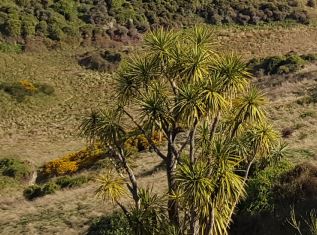Videos are filmed each day on the field trip and edited each night. Videos will be linked here during the field trip from 18-20 September 2018.
For help and more information about LEARNZ videos, go to Help with Videos in the LEARNZ Support section.
Video question sheet - Word (31k) | PDF (217k) | Google Doc to use for each video (based on SOLO Taxonomy).
Tuesday 18 September
1. Riccarton Bush Restored
You are in Riccarton Bush, sitting next to some ancient kahikatea trees with field trip expert David Norton. David talks about the importance of having these sorts of forest areas. They are nice places to visit, are good for education, are homes for native wildlife, and provide examples of what to work towards for restoration projects such as Tiromoana Bush.
2. Tūhaitara Coastal Park Restoration in Action
You have travelled north of Christchurch City and are now at Tūhaitara Coastal Park by Woodend Beach. Here you meet Park Manager Greg Byrnes. Greg gives an overview of Tūhaitara and the importance of community involvement to help achieve the vision for a restoration project such as this.
3. Woodend School Biota Node
Meet students from Woodend School who were monitoring one of the many ‘biota nodes’ at Tūhaitara Coastal Park. Find out what a biota node is and what their monitoring activities involve.
4. Restoration of Tiromoana Bush
You have made it to Tiromoana Bush. Here you meet Rangi Lord, Kate Valley Landfill General Manager. Rangi talks about how Transwaste Canterbury set aside this area of land for restoration during the establishment of the landfill. A lot has happened since then, and now David Norton leads the restoration project.
Wednesday 19 September
1. Tiromoana Restoration - An Overview
You have walked down part of the Tiromoana Bush track to a wetland area called Kate Pond. David. Norton gives you an overview of the goals for Tiromoana Bush and the basic plan of how to achieve these.
2. So Where do We Start?
Visit a newly established restoration area. Find out some of the key tasks you may need to do when setting up a restoration site. The area looks a bit bare, but I guess you must start somewhere!
3. And 10 Years Later
In this video you can compare the newly established restoration site in the previous video with one that has been growing for a few years. What are the differences? What are some challenges? And what are some key ideas when thinking about your own restoration project?
4. Working with Nature
You are in a remnant stand of kānuka. This area of Tiromoana Bush is a lot cooler and darker because of the cover these trees give. Find out what has been removed to encourage such a variety of understory growth amongst the kānuka. I wonder if this new growth is natural or if some plants were put here by people.
5. A Hole in the Canopy
Cutting kanuka down was supposed to help the tōtara grow, but self seeded species such as ngaio, five-finger, marble leaf, and māhoe took off.
Thursday 20 September
1. Monitoring Pests
Meet pest monitoring and control expert Fraser Maddigan and help him set up some tracking tunnels. Tracking tunnels are a good tool to use for finding out what pesky critters there might be in an area. They’re easy to use and fun too, especially when the pest detective work comes into play.
2. The Big Pests
Pigs and deer are some of the larger pests that might be found in an area. What damage do they do and how does this affect restoration planting? How do you know if they living nearby? And what does Tiromoana Bush have that helps to keep them out?
3. Getting Rid of pests
Once you figure out what pests there are in an area, you then need to decide how to get rid of them. In this video, Fraser Maddigan shows several examples of traps and bait stations that are available, and the various pests they are used for.
4. Ecological Restoration - A Roundup
Join Andrew and David Norton at the coastal lookout as part of the Tiromoana Bush track. Check out the breath-taking views! Hear what messages David and Andrew have as they summarise the field trip.




